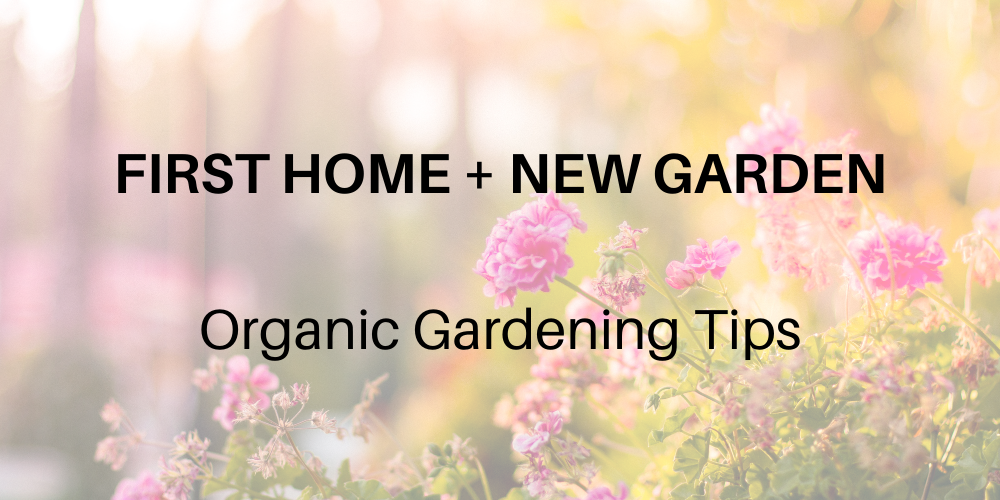How to Plant Your Organic Garden in A New Home
https://www.c4dcrew.com/wp-content/uploads/2019/10/CONTRACT-FOR-DEED_-PROS-AND-CONS-2.png 1000 500 Sam Radbil Sam Radbil https://secure.gravatar.com/avatar/c8f81a032b93592f72744c525214f92a?s=96&d=mm&r=gSo, you’ve bought your first home. But now you want to make some upgrades, including an awesome garden to add value to your property.
How does it feel when you see a friend’s backyard organic garden? There is a refreshing sensation that comes along with the sight of an organic garden. Organic gardening is highly coveted by many due to its numerous health benefits. It decreases the number of pesticides your family eats, and it’s also good for the environment. But sometimes eating all organic can be a bit expensive, that’s why there is nothing better than growing your own natural garden.
If you want to eat and stay healthy, that is the right thing for you. Below is a simple yet very effective procedure on how to set up an organic garden for fresh and delicious food. If you need some extra tips, check out some awesome guides here.
Establish Your Location
Choosing the right location for your garden is the first thing to do. You need to put into consideration all aspects surrounding the garden including the following;
- Drainage
- Sunlight penetration
- Type of soil
- Safety
- Accessibility
- Ease of handling
Set the garden in the most appropriate location that won’t be problematic to handle. The best site is where it’s easily accessible, has direct sunlight, and good drainage. Remember that vegetables need 6-8 hours of full sun a day and a little shade to protect them from the afternoon heat.
Combat Weeds
If your new home garden is overgrown and totally out of control, your first fight might be with weeds.
If your site is small, you can do the whole weed-digging and pulling thing manually. Make sure to remove them with the roots as they will grow back and compete for sunlight and nutrition with your crops.
However, if your garden is big, weeds might be a problem and hours of digging can lead to back problems. The best thing you can do in this situation is to mulch.
Simply, cut down the higher weeds and cover the area with mulch. That will exclude the light so the weeds will weaken in the dark.
Don’t be tempted to use weed killers, as they contain toxic chemicals. After all, you want healthy fruits and veggies, not to mention various medical plants you could grow.
Prepare the Soil
If you want to have the best results from your garden, soil testing and preparation is inevitable. According to professional gardener & horticulturist Pol Bishop, you must ensure that your soil is appropriately conditioned and that it suits whatever you want to plant.
First of all, ensure that your soil is healthy and has organic nutrients. Also, check the presence of any chemicals on the soils that can make your crops inorganic. You can achieve this by doing a soil testing procedure.
Buy a home testing kit or send soil samples to a certified lab for analysis. You can opt not to test the soil if it’s plenty in humus.
Add Compost
All gardens benefit from compost. It feeds plants, helps with water retention and air circulation. You can create your own compost or buy it from the local garden centre if you have a large garden.
Add five large buckets of compost for every five square meters of ground. It should be at least 10 cm on the top of the soil. Once you decide to sow seeds, use a rake to flatten the topsoil so the seeds can access both – soil and water.
Shop for Seedlings
Did you know that you can acquire organic seedlings from the local farms and planters? If you don’t want to go through the hassle of setting up a seedbed, purchase ready-made seedlings.
The best place to acquire seedlings is from extension service centers. Talk to experts and seek advice on how to go about with your garden. Inquire about different species so as to know which suits you the best.
Choose plants that grow best within your region and climate. Also, consider choosing companion plants to your primary ones as they provide necessary nutrients to help them grow and repel pests that would otherwise attack your crops.
Choose your seedlings gently and avoid the wilting ones. Also, avoid budding crops, or the flowery ones that tend to be unsuitable for transplant.
Assemble Gardening Tools
As you are going to embark on planting, assemble the right tools that you must have. Browse through some gardening tools to weed and dig from Easy Digging. Some of the starter tools include:
- Watering can
- Hoe
- Rake
- Shovel
- Pruners
These are some of the tools you will need when gardening. They are essential for the daily maintenance of the garden, and you need to purchase the right quality.
Plant Your Seedlings
After assembling the right tools, you can move on with the planting procedure. Plant your crops in the proper method and spacing guidelines. When planting, you can seek professional advice if you aren’t an expert in it.
Make sure the beds are well prepared and that the soil is wet enough. Take extra care on the seedlings immediately after planting to ensure they don’t die.
Keep it Clean
Once a week, make sure to walk through your garden and pick up any dead leaves. Remember that diseases spread rapidly in fallen foliage, and sometimes you can save the entire plant just by picking off an infected leaf.
Water Wisely
The best time to water plants is in the morning as then is cool, and water evaporation is reduced. Never water in the evenings, as plants will stay damp overnight, which will make them vulnerable to fungal diseases.
Water the roots, not the greenery, that’s why a drip or soak system would be perfect. To establish strong plants, water infrequently but deeply. One or two applications a week considering rain is enough. Always use air temperature water, hereof collected rainwater is best.
Practice Crop Rotation
Don’t grow the same crop in the same spot every year. Some crops like potatoes and cabbages reduce soil nutrients, whereas others like peas and beans build them up. That’s why crop alteration is essential. Also, this will prevent the build-up of pests and diseases in the soil.
Use the Companion Planting Scheme
Growing strongly scented plants near your crops will repel pests by confusing them.
- Chives – prevents aphids and carrot fly
- Lavender – attract pollinators and deter aphids
- Rosemary – stops carrot fly
- Yarrow – attract ladybirds and hoverflies
- Dill – attract aphid-eating hoverflies
Attract Wildlife
Stop using chemical pesticides, which upset the natural ecological balance and kill everything, from pests to their natural predators. Pest may recover way faster than their predators and keeping their number in check may be a problem. Toads, hedgehogs and birds are your best friend in the pest control job.
For example, flowers like marigolds will attract ladybirds and hoverflies which eat aphids. Research your pest control and learn as much as possible about the sort of pests depending on what you are going to grow.
Below you can see which flowers can help you attract helpful insects like lady beetles and praying mantis. According to stylists at the farm-fresh flower company Bouqs, the following will also attract bumblebees to pollinate the rest of your plants.
- Cleome
- Zinnia
- Daisy
- Sunflower
- Salvia
The Bottom Line
Are you looking forward to planting your organic garden? This is the simplest way that will give you the ultimate organic garden. If you have been dreaming of owning a garden, follow this procedure to fulfill your dreams. Happy harvesting!\




